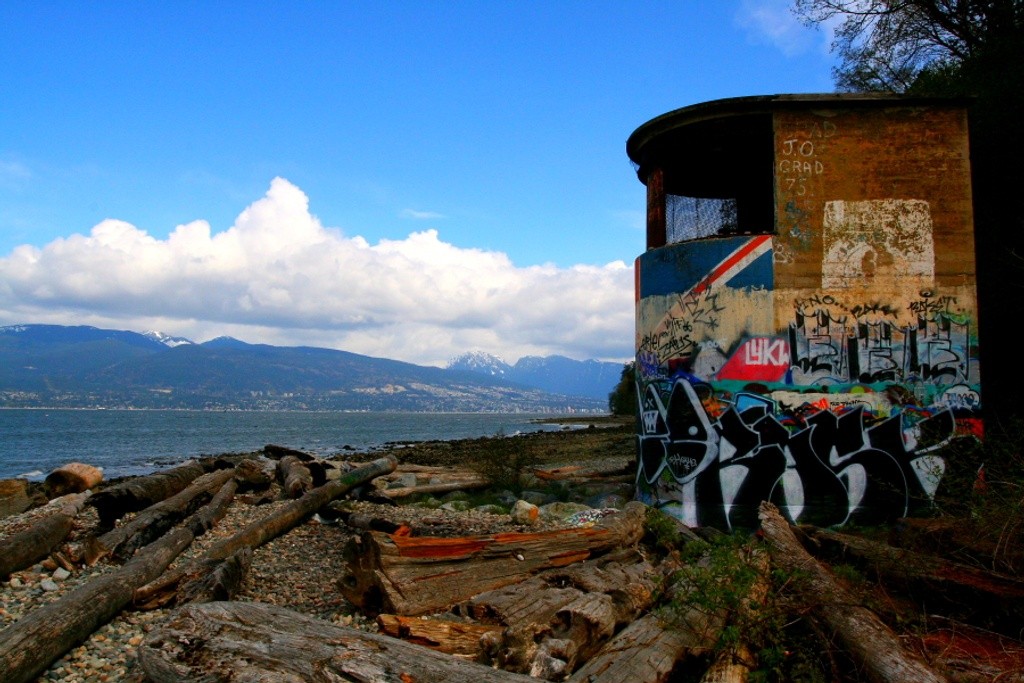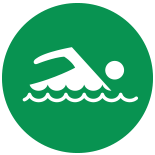Wreck Beach Trail 4 (Towers Beach)
Vancouver, British Columbia, Canada

Photo by Brandon Taylor on Flickr
Wreck Beach Trail 4 (Towers Beach) has two concrete towers that are remnants of Vancouver's Point Grey Battery, a defense outpost from WWII that was built to look for Japanese submarines. It held 60-inch searchlights capable of a three-to-five-mile projection into the Burrard Inlet to help spotters identify an incoming attack. The battery was decommissioned a few years after the war and the searchlight towers, which give the beach its name, were abandoned. These towers have since become popular graffiti canvases.
The beach boasts a nice view out into the ocean and the atmosphere at this beach during the summer is certainly one-of-a-kind. It is almost always guaranteed to hear some live music at this beach. On summer days, there are lots of vendors selling beach-side goodies like jewellery, souvenirs, and hot dogs.
There is a well maintained staircase all the way down to Wreck Beach Trail 4 (Towers Beach), but be careful as it is rather steep.
First Nations History
Wreck Beach Trail 4 (Towers Beach) is located on the traditional, ancestral, and unceded territory of the Musqueam First Nation. The Musqueam have lived on this land since time immemorial. This area was known as “Ulksen” or “the nose” as it described the shape of the extending portion of the peninsula. The land and waters here have always been a place of knowledge for the Musqueam, where they would educate and train their youth. The sea was used for canoe pulling and fishing, the forest for hunting and gathering, and the beaches for crabbing.
The Point Grey cliffs acted as a place of defense. The Musqueam had specially selected people who were called “runners” that would stand guard on these tall cliffs. They would be on the lookout for incoming invaders from the north, particularly the Squamish and the Haida of Vancouver Island and the Queen Charlotte Islands. The runners would have to decide if these incomers were friends or enemies, and would sprint through trails in the forests to alert their tribal members. If the incomers were deemed to be enemies, the Musqueam defense would counter the aggressor by embarking war canoes and warding off the invasion.
The description above was copied from or heavily based on Swim Guide, with permission.
Features
- Swimming
- The beach is rocky
More Information
- The Burrard Bulletin - Tower Beach in Vancouver – Everything You Need To Know
- Swim Guide - Weather and water quality for Wreck Beach Trail 4 (Towers Beach) and 8,000 other beaches.
- Wikipedia
- Google Maps








